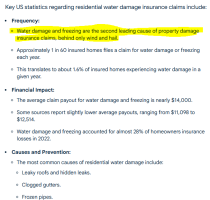jar546
CBO
I’ve seen this enough times that it needs to be said. During a rough electrical inspection, every electrical box should have all its wires terminated. That means neutrals are connected, grounds are spliced with pigtails, and everything is ready for device installation. I’m not talking about testing functionality; that happens at final, but at rough, the only chance you get to verify what’s inside the boxes is before they’re covered up.
Yet I keep hearing that some inspectors don’t require the terminations to be in place. They’re approving roughs where the cables are secured and routed, but the conductors are just cut and hanging loose inside the boxes. If that’s all you’re inspecting, then you’re only doing half the job. Once the drywall is up and the devices are installed, you’ve lost your chance to check box fill, conductor count, splices, bonding, and pigtailed grounds. You can't retroactively confirm if everything was done right.
What’s the value in walking a job at rough if you can’t see whether the installer actually completed the internal wiring? It’s a waste of everyone’s time if you’re not verifying what matters.
Curious to hear how others approach this. Do you require all splices and pigtails to be made at rough, or do you wait until final and hope it was done right?
Yet I keep hearing that some inspectors don’t require the terminations to be in place. They’re approving roughs where the cables are secured and routed, but the conductors are just cut and hanging loose inside the boxes. If that’s all you’re inspecting, then you’re only doing half the job. Once the drywall is up and the devices are installed, you’ve lost your chance to check box fill, conductor count, splices, bonding, and pigtailed grounds. You can't retroactively confirm if everything was done right.
What’s the value in walking a job at rough if you can’t see whether the installer actually completed the internal wiring? It’s a waste of everyone’s time if you’re not verifying what matters.
Curious to hear how others approach this. Do you require all splices and pigtails to be made at rough, or do you wait until final and hope it was done right?


